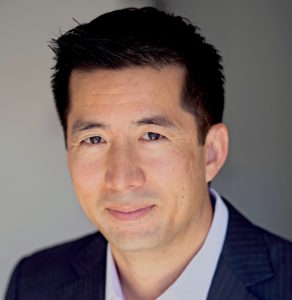One concrete tip that can help cope with Panic – Part 5 of an 8-part series


Part 4 of this series discussed how preventing a panic attack is much more effective than trying to cope with one once it has started. We also highlighted the need to confront the issues or fears behind the panic, rather than avoid them.
We will talk more about exposure therapy later on in this series, as there are strategies and techniques for doing this effectively that merit separate attention.
In the meantime, this article will focus on another concrete tool that anyone can consider applying right off the bat: Words.
We can sometimes underestimate the power in the words we use – not just the words we say out loud, but even the words that silently make up our own thoughts. Here are a couple of brief examples to illustrate the point:
Say two of your friends saw the same movie. If one told you the movie was “incredible!” and the other said it was “really good,” you would certainly get two different feelings about the film, even if they both really liked it.
Or imagine a man who feels criticized by his spouse. If in the heat of a conflict, he said “You always put me down!”, you can imagine how naturally she might feel attacked and defensive, perhaps leading to further escalation of conflict. By contrast, if he said “it really hurts me when you say those things”, it more naturally pulls for compassion from her, and is more likely to lead to understanding and resolution.
These two situations show how influential the choice of words we think of and speak out can be. Some words are much more naturally expressive and animating than others, and can result in more extreme emotions and/or more extreme action. When dealing with what we refer to as “panic attacks,” it can be much more helpful to adopt less charged language to help downshift our anxiety.
It isn’t uncommon for people to think or say these kinds of phrases when experiencing panic:
“Oh my God! I think I’m having a FULL ON PANIC ATTACK!!”
“I’m FREAKING OUT!”
“You look like you’re having a MELT DOWN.”
“I think I’m LOSING MY MIND!”
Such phrases definitely capture how uncomfortable it feels to experience panic. However, if these are the kinds of thoughts circling at an anxious moment, they are likely to cause even more anxious feelings, and lead to further physiological arousal, as per our Cognitive Behavior Therapy model, below.

So to avoid feeding into this cycle of anxiety, consider adapting some less charged and more neutral language to think about and describe your experience. Here are some alternatives:
“I’m having a moment.”
“I’m feeling a wave coming.”
“I hear that unpleasant guest knocking at the door.”
“I’m getting a bit worked up, and need a time out for myself.”
“I think I’m having a little episode. Just give me a few minutes.”
This is of course not an exhaustive list, but reading these alternative ways of describing a panic attack evokes a more calm and resilient feeling, and is less likely to add to further anxiety.
Consider what language for your panic episodes might help you cope with them more effectively. You might even consider a way to make it sound humorous to yourself, to disarm the sense of danger (e.g. “Oh! I’m getting those willies again!”). Regardless of what words you choose to replace panic attacks, be aware of how you think about them for yourself, and what language you might best use to describe these experiences to those close to you.
Read on for more information about how we can help with that.
Part 1 addressed the different ways people may experience panic attacks
Part 2 addressed an often unrecognized reason why we panic
Part 3 discussed the most common unhelpful ways that people cope with panic
Part 4 discussed the best way to cope with a panic attack
Part 6 will discuss the use of Mindfulness for panic
Part 7 introduces Interoceptive exposure for panic
Part 8 describes other live “In Vivo” exposure strategies for panic

Martin Hsia, Psy.D. is the Clinical Director of CBT SoCal, and specializes in helping people with OCD, Anxiety, and Insomnia in Glendale, CA.
